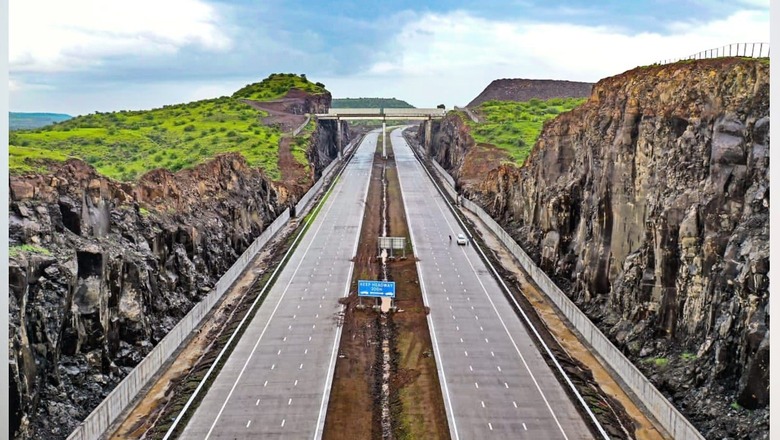
views
The Balasaheb Thackeray Samruddhi Mahamarg (expressway) between Nagpur and Mumbai, the first phase of which was was inaugurated by PM Modi on sunday, will be the first highway in India where nine green bridges (overpasses) and 17 underpasses for wild animal movement are being built.
Leopard-proof fences will be constructed all along the highway in order to ensure the animal doesn’t jump over on to the 701 km expressway on which vehicles will be expected to ply at speed up to 150kmph. The 120-metre wide road runs through 10 districts of Maharashtra and will cut the travel time from 16 to 8 hours.
Of this 701km, 117km passes through wildlife habitats, tiger corridors, and eco-sensitive zone (ESZ) of three sanctuaries — Tansa, Katepurna, and Karanja Sohol called as wildlife-focused area (WFA), which is why the forest department pressed for steps to prevent animal deaths.
In all, there will be 1,797 structures including box culverts, minor bridges, culverts, canals, viaducts, cart tracks, vehicle overpasses (VOPs), minor and major bridges, tunnels etc.
What Are Wildlife Bridges
Eco-bridges are built with the aim to ensure and enhance wildlife connectivity in a region and make sure the animal movement is not disrupted due to the traffic passing on highways in forest areas. In a wildlife overpass, wild animals are given the option to pass over the structure while vehicules pass under the bridge. This movement is maintained to ensure unhindered movement of animals, especially tigers.
A Look At Different forms of Eco-bridges
There are many kinds of eco-bridges that are beneficial for the wildlife conservation. Here are some:
- Amphibian tunnels or culverts: They are built keeping in mind the conservation of smaller mammals.
- Canopy Bridge: Made usually for squirrels, monkeys, and other other mid-size species living in trees.
- Concrete underpasses or overpass tunnels: These are designed to make sure animal movement is not affected. They are built for larger animals, especially elephants, tigers. Another idea behind building these bridge is to make sure animals don’t get hit by vehicles.
The Idea Behind Eco-bridges
Before building an eco-bridge, conservationists and authorities involved in the project look at two important aspects — location and size.
“Wildlife bridges, often called “green bridges” in the United Kingdom, are usually covered in native vegetation of various kinds. This is to make them appear like a natural part of the landscape and help invite animal passage. The crossings often work most effectively in conjunction with highway fencing, placed strategically on one or both sides of the entrance to funnel wildlife toward the corridor,” stated a NatGeo report.
According to the report, the concept of eco bridge was first developed in France in the 1950s. “It took off in the Netherlands, where more than 600 crossings have been constructed to protect badgers, elk and other mammals.”




















Comments
0 comment